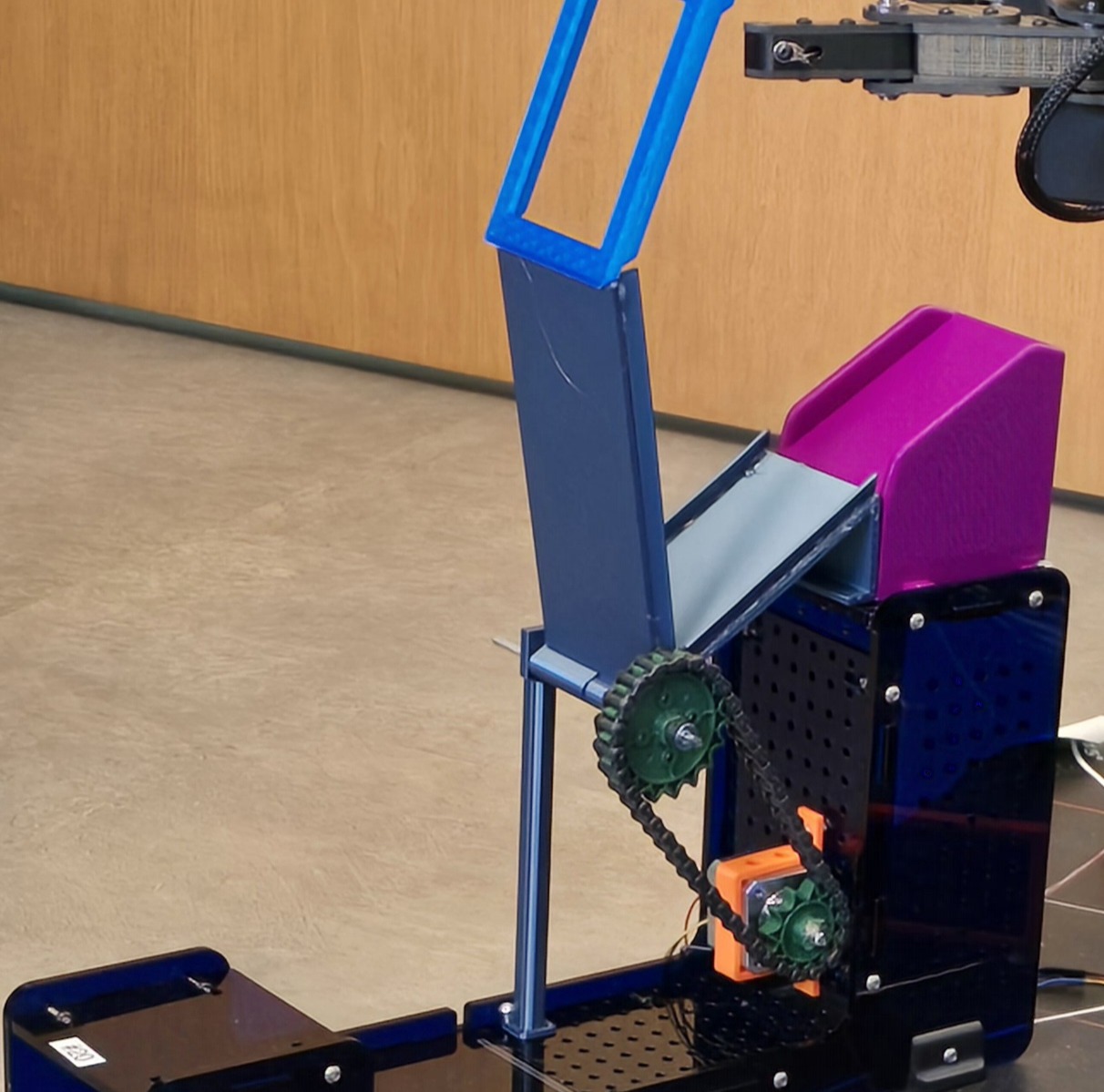Project Overview
For McMaster’s 1P13 “Luggage Project” our team had eight weeks and a CA $30 budget to automate baggage transfer between two levels of an airport-style test rig. I proposed—and we ultimately built—a rotary-actuated ramp that swings up to catch each suitcase and then lowers it smoothly to the lower platform. The simple one-degree-of-freedom mechanism, driven through a 12-tooth/24-tooth sprocket pair, met all size, cost and torque constraints while cutting potential baggage-handling errors in course trials.
My Contributions
I led mechanical concept selection, pitching the rotary-ramp idea and justifying it with trade-off matrices, then translated it into a detailed CAD assembly complete with railings, supports, and a custom lightweight hinge. After calculating the 12-tooth/24-tooth sprocket ratio to satisfy torque limits, I iterated the design through three prints on my Bambu Lab P1P—dialing in bed adhesion, clearances, and infill until shafts, screw holes, and platform mounts fit flawlessly. Throughout the build as Project Manager I managed the schedule, coordinated Q-arm test sessions, and documented work-arounds when faulty control hardware limited practice time.
.png)
.png)


.png)
.jpg)
.png)
